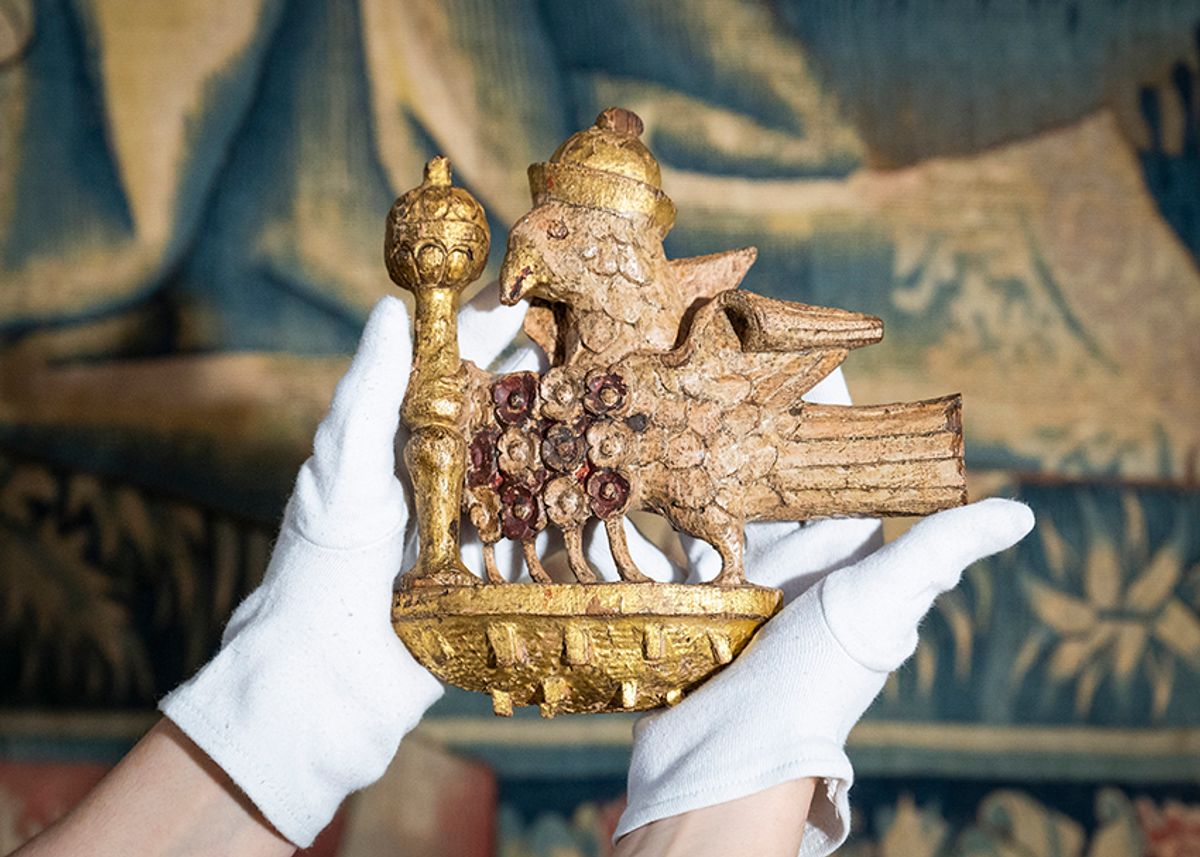A small white and gold bird, crowned, clutching a sceptre and perched rather uncomfortably in a clump of Tudor roses, will go on show at Hampton Court today. A rediscovered emblem of Anne Boleyn, its display marks the 500th anniversary of the day Henry VIII first set eyes on his future bride. It will be exhibited under the spectacular hammer beam roof of the Great Hall, from which the palace experts suspect it originally came.
Anne’s white falcon, its original colours visible again after it was gently cleaned of a layer of black paint and centuries of wax, soot and grime, was spotted by the antiques dealer Paul Fitzsimmons, an expert on early English oak, who has given it on long-term loan to Hampton Court. Fitzsimmons spotted the bird in an auction of another dealer's collection in 2019, had a hunch about its royal connections, and paid £75 for it.
Henry was still married to Katherine of Aragon when he is first recorded as seeing one of her ladies in waiting: the 21-year-old Anne newly returned from Paris, equipped with elegant French fashions and manners. She appeared before him in a grand court masque, dressed in white and gold, representing Perseverance—and persevere she did. Although surviving portraits are unflattering, contemporary accounts record her intelligence, wit and charm, which had Henry literally bewitched.
By 1533 Henry had changed the course of English history, broken with Rome and annulled his marriage to Katherine, and could marry Anne. In the first joy of their marriage and hope of a male heir, his great hall at Hampton Court was lavished with entwined letters A and H, her coat of arms and her white falcon emblem, with the roses flowering from a dead tree stump symbolising fertility.
Within three years, when she had produced only a daughter, the future Elizabeth I, she was accused of serial adultery and incest, and beheaded on Tower Green, leaving Henry free to marry the third of his six wives, Jane Seymour. Legend insisted that every trace of Anne was scoured from his walls, but in fact cost-cutting saved many emblems which were simply painted over, as some of Katherine’s had been.
Fitzsimmons alerted Historic Royal Palaces of his hunch about the falcon, and research has now established how closely it matches 43 surviving birds, barely visible from ground level in the frieze and roof timbers, and even the name of the craftsman who made them; Thomas Joyner, paid £5 4s 2d for 250 “of the King’s and Queens badges”. The spectacular roof was built in 1532, the last great example of its kind in England, when the marriage was already being planned.
Sebastian Edwards, the deputy chief curator at Historic Royal Palaces, described the falcon as “a tantalising what if”.
It may be years before they can set up a roof height scaffold to compare the new arrival with the survivors for a conclusive answer, he said, but the evidence was compelling.
“The evidence that has emerged during our research lends great weight to the theory, particularly with there being one falcon less than we’d expect in the surviving decorative scheme. Either way this is an incredibly rare example of Tudor royal ornamentation, imbued with the legend of Henry’s most famous Queen.”


